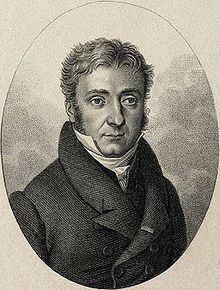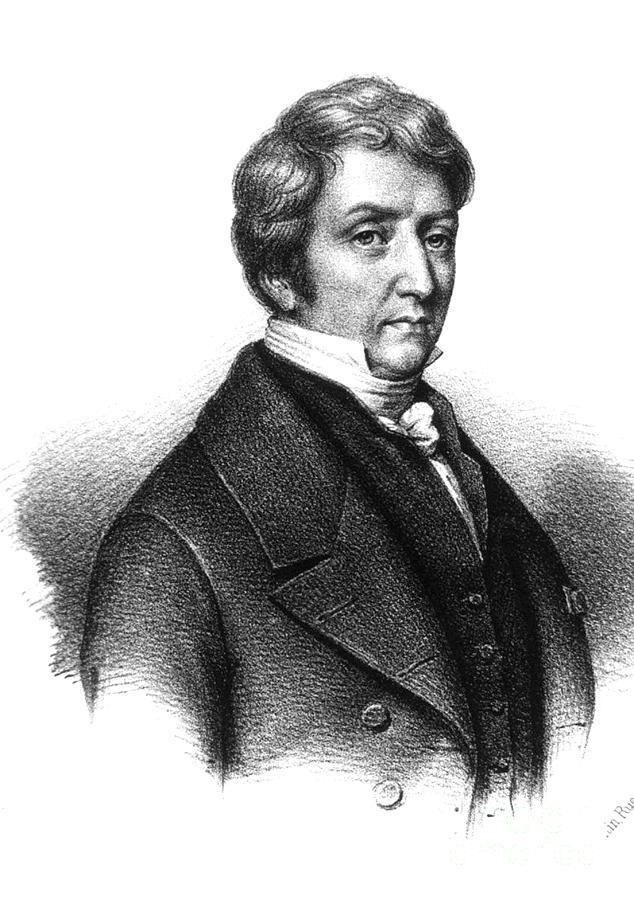Name Pierre Dulong Role Physicist | Education Ecole Polytechnique Children Alexis Dulong | |
 | ||
Born 12 February 1785Rouen ( 1785-02-12 ) | ||
Pierre Louis Dulong FRS FRSE IOF (12 February 1785 – 19 July 1838) was a French physicist and chemist. He is remembered today largely for the law of Dulong and Petit, although he was much-lauded by his contemporaries for his studies into the elasticity of steam, conduction of heat, and specific heats of gases. He worked most extensively on the specific heat capacity and the expansion and refractive indices of gases. He collaborated several times with fellow scientist Alexis Petit, the co-creator of the Dulong-Petit law.
Contents

Early life and education
Dulong was born in Rouen, France.
An only child, he was orphaned at the age of 4, he was brought up by his aunt on Auxerre. He gained his secondary education in Auxerre and the Lycée Pierre Corneille in Rouen before entering the École Polytechnique, Paris in 1801, only for his studies to be impeded by poor health. He began studying medicine, but gave this up, possibly because of a lack of financial means, to concentrate on science, working under the direction of Thénard.
Career
In chemistry, he contributed to knowledge on:
Dulong also discovered the dangerously sensitive nitrogen trichloride in 1811, losing two fingers and an eye in the process. The fact that Dulong kept the accident a secret meant that Sir Humphrey Davy's investigation of the compound had the same unfortunate consequence, although Davy's injuries were less severe.
In addition to his accomplishments in chemistry, Dulong has been hailed as an interdisciplinary expert. His contemporaries in the Royal Society of London acknowledged his "command of almost every department of physical science".
In 1815, Dulong collaborated for the first time with Alexis Petit, in publishing a paper on heat expansion. The two would continue to collaborate, researching the specific heats of metals. In 1819, Dulong and Petit showed that the mass heat capacity of metallic elements are inversely proportional to their atomic masses, this being now known as the Dulong-Petit law. This law, though largely discredited in modern times, helped develop the periodic table and, more broadly, the examination of atomic masses.
In 1818, Dulong was honored by the French Academy for work that would contribute to his co-discovery of the Dulong-Petit law.
In 1820, Dulong succeeded Petit (1791-1820), who retired due to poor health, as professor of physics at École Polytechnique. Dulong studied the elasticity of steam, the measurement of temperatures, and the behavior of elastic fluids. He studied how metals enabled the combinations of certain gases. He made the first precise comparison of the mercury- and air-temperature scales. In 1830, he was elected a foreign member of the Royal Swedish Academy of Sciences.
He died of stomach cancer in Paris. His is one of the names of 72 scientists inscribed on the Eiffel Tower. At the time of his death, he was working on the development of precise methods in calorimetry. His last paper, published the year of his death, examined the heat released from chemical reactions.
Personal life
He was married to Emelie Augustine Riviere in 1803.
Socially, Dulong was often dismissed as a dry, standoffish individual. His few friends disagreed with this view, viewing his personality as subdued rather than dull.
Dulong was noted both for his devotion to science and the stolid, almost casual, bravery he displayed in prosecuting his experiments. One such experiment involved the construction of a glass tubular apparatus atop the tower at the Abbey of St. Genevieve. The tower was unsteady enough that an explosion of the experimental materials, considerably likely considering their volatility, could easily have toppled the tower and killed the researching physicists, including Dulong. The experiment though "full of danger and difficulty", was completed under Dulong's leadership.
Another example of Dulong's indifference to danger amid scientific pursuit came about in his studies into nitrogen trichloride. Despite losing two fingers and one eye in his initial experiments, Dulong continued to research the unknown substance. His inquiry led to more injuries, after which he turned over the results of his studies to Sir Humphrey Davy.
Death
In life, Dulong poured the bulk of his finances into his scientific experiments. He was often destitute. As a result, he died without leaving his family any significant inheritance.
He is buried in Père Lachaise Cemetery. His monument was paid for by his scientific peers.
